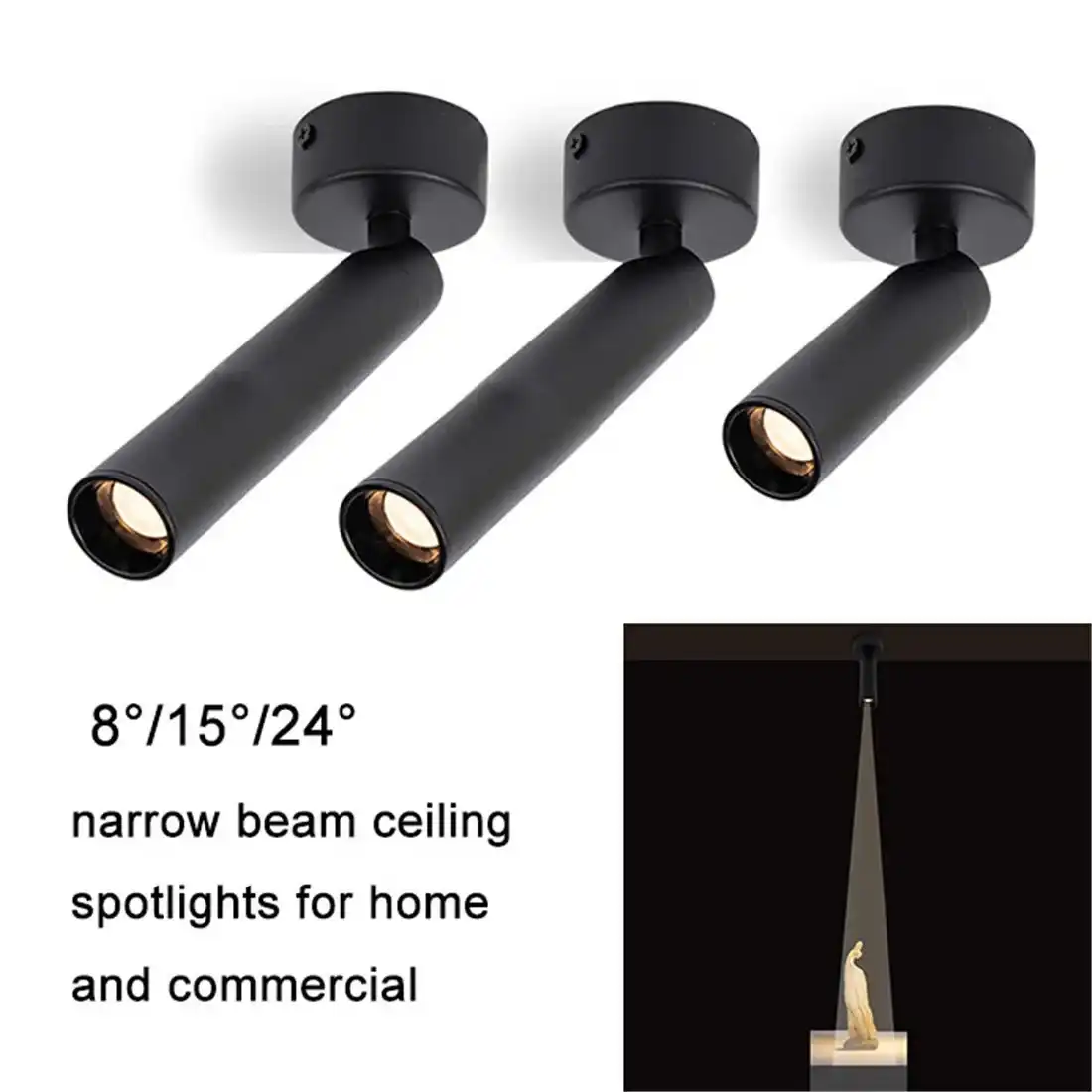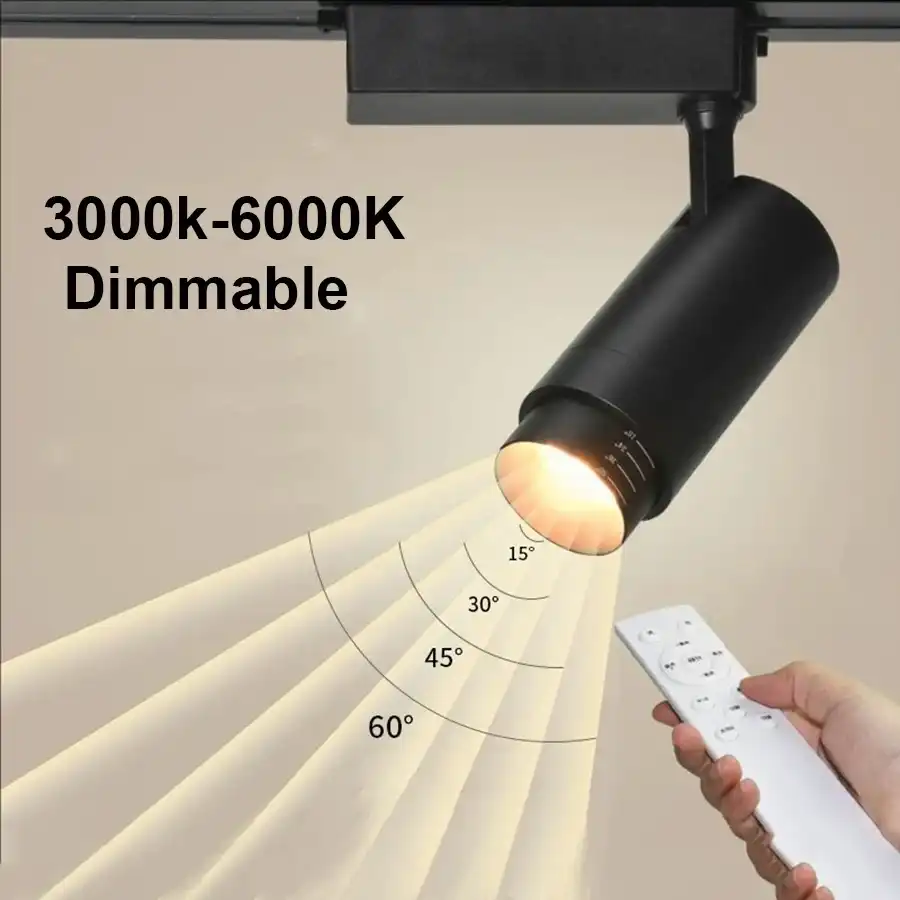How far apart should recessed spotlights be?
When it comes to installing recessed spotlights, proper spacing is crucial for achieving optimal illumination and creating the desired ambiance in your space. The general rule of thumb for spacing recessed spotlights is to place them approximately 4 to 6 feet apart. However, this can vary depending on factors such as ceiling height, room size, and the specific lighting requirements of your space. For standard 8-foot ceilings, spacing spotlights about 4 feet apart is typically ideal. In rooms with higher ceilings, you may need to increase the distance to 5 or 6 feet to maintain proper coverage. It's essential to consider the beam angle and lumen output of your chosen spotlights, as these factors will influence the optimal spacing for your particular situation.
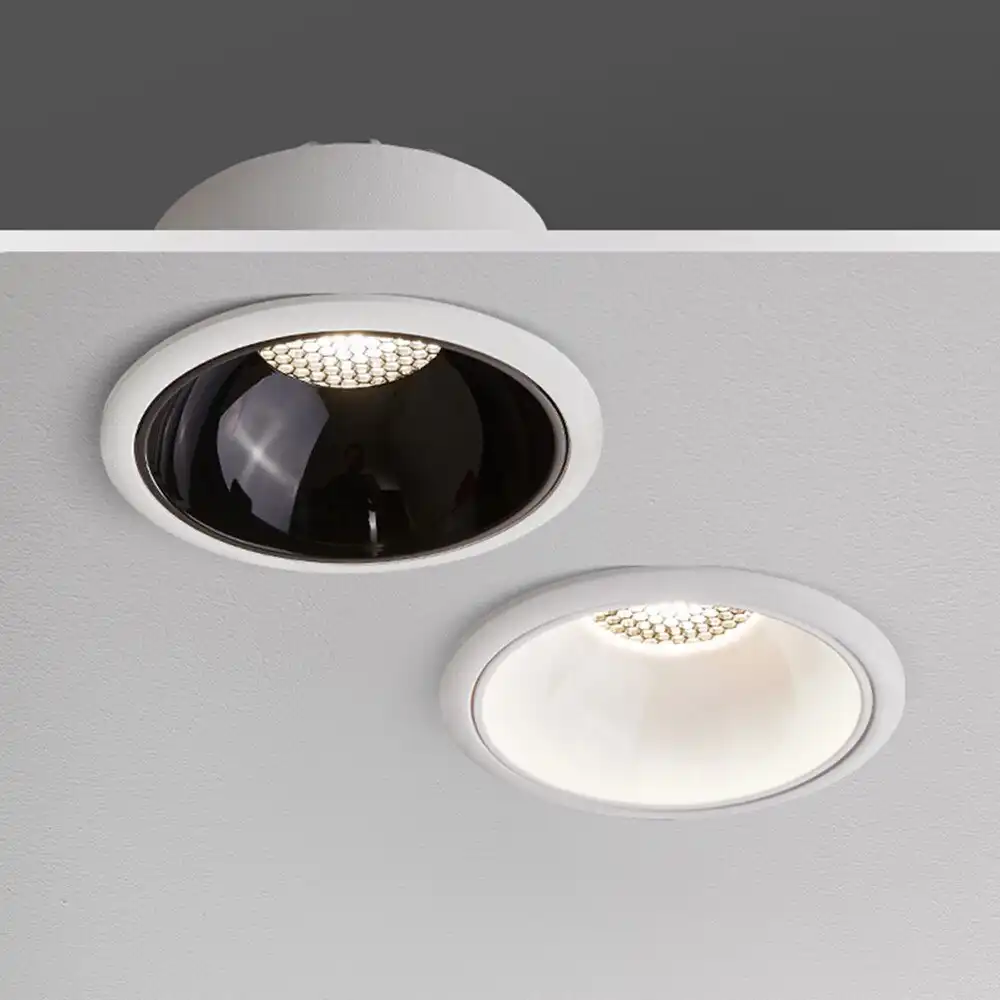
Factors Influencing Recessed Spotlight Spacing
Ceiling Height and Room Dimensions
The height of your ceiling plays a significant role in determining the appropriate spacing for recessed spotlights. Higher ceilings generally require wider spacing to ensure even light distribution across the room. For instance, a room with a 10-foot ceiling might benefit from spotlights placed 5 to 6 feet apart, while a space with an 8-foot ceiling could achieve optimal lighting with fixtures spaced 4 feet apart.
Room dimensions also impact spotlight placement. Larger rooms may require more fixtures to achieve adequate illumination, while smaller spaces might need fewer lights placed closer together. It's crucial to consider the room's layout and purpose when planning your lighting design.
Beam Angle and Light Output
The beam angle of your spotlights is another critical factor in determining proper spacing. Spotlights with narrow beam angles (15-24 degrees) create focused pools of light and may require closer spacing to avoid dark spots between fixtures. Conversely, wider beam angles (36-55 degrees) provide broader coverage and allow for greater distance between lights.
Light output, measured in lumens, also affects spacing decisions. Higher lumen output means brighter light, potentially allowing for increased distance between fixtures. For example, USKYLED's LED spotlights offer a range of power options from 7W to 20W, with lumen outputs of 100-110 lm/W, providing flexibility in designing your lighting layout.
Room Function and Desired Ambiance
The intended use of the space and the atmosphere you want to create should guide your spotlight spacing decisions. Task-oriented areas like kitchens or home offices may benefit from closer spacing to ensure ample illumination for detailed work. In contrast, living rooms or bedrooms might require a softer, more dispersed lighting scheme achieved through wider spacing.
Consider incorporating dimmable spotlights, such as those offered by USKYLED, to allow for adjustable lighting levels that can adapt to different moods and activities throughout the day.
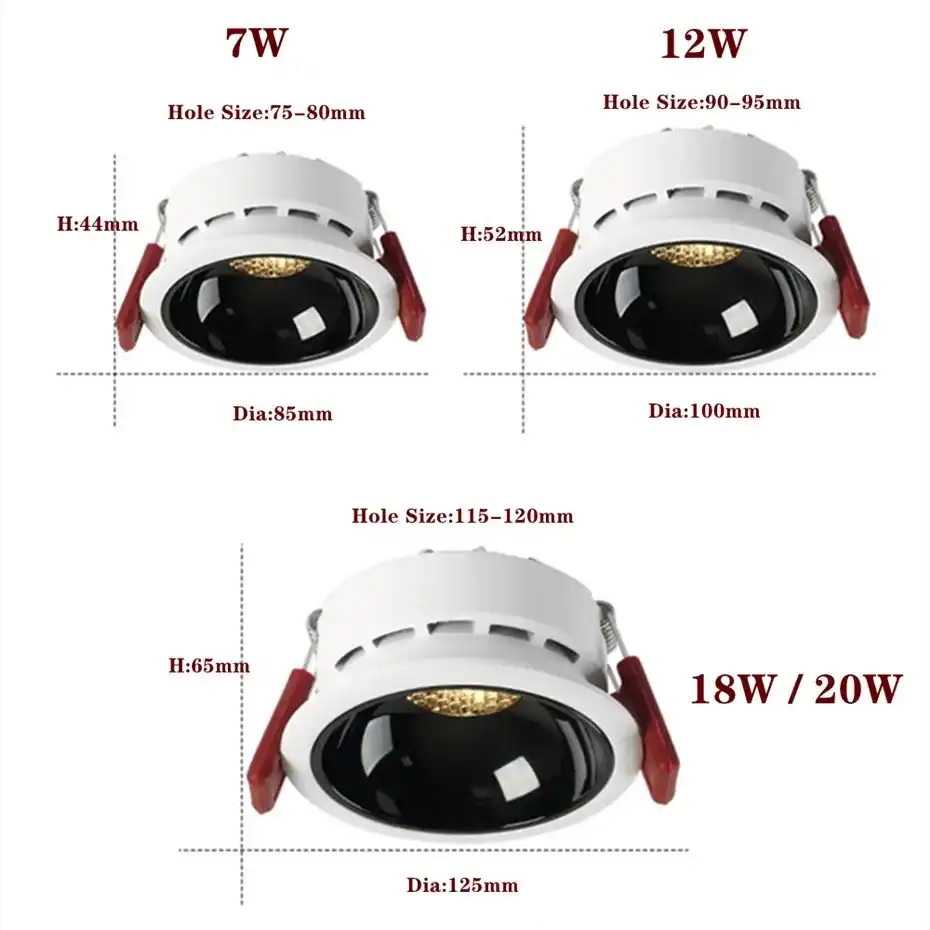
Calculating the Ideal Spotlight Spacing
The Rule of Thumb Method
While the 4 to 6 feet spacing guideline provides a good starting point, a more precise method for calculating spotlight placement involves dividing your ceiling height by two. For example, if you have an 8-foot ceiling, you would ideally space your spotlights about 4 feet apart. This method helps ensure that the light cones from adjacent fixtures overlap slightly, creating even illumination across the room.
Advanced Calculation Techniques
For a more exact approach, consider using the following formula:
Spacing = (Ceiling Height - Work Surface Height) × 0.5
This calculation takes into account the distance between the ceiling and the surface you want to illuminate, typically a countertop or desk in task-oriented areas. By subtracting the work surface height from the ceiling height and multiplying by 0.5, you can determine the optimal spacing for your recessed spotlights.
Room Coverage Considerations
To ensure comprehensive room coverage, start by placing spotlights around 2 feet from the walls and work your way inward using the calculated spacing. This approach helps eliminate shadows in corners and provides even illumination throughout the space.
Remember to account for any obstacles or architectural features that may impact light distribution, such as beams or skylights. Adjust your spacing as needed to maintain consistent lighting levels across the entire room.
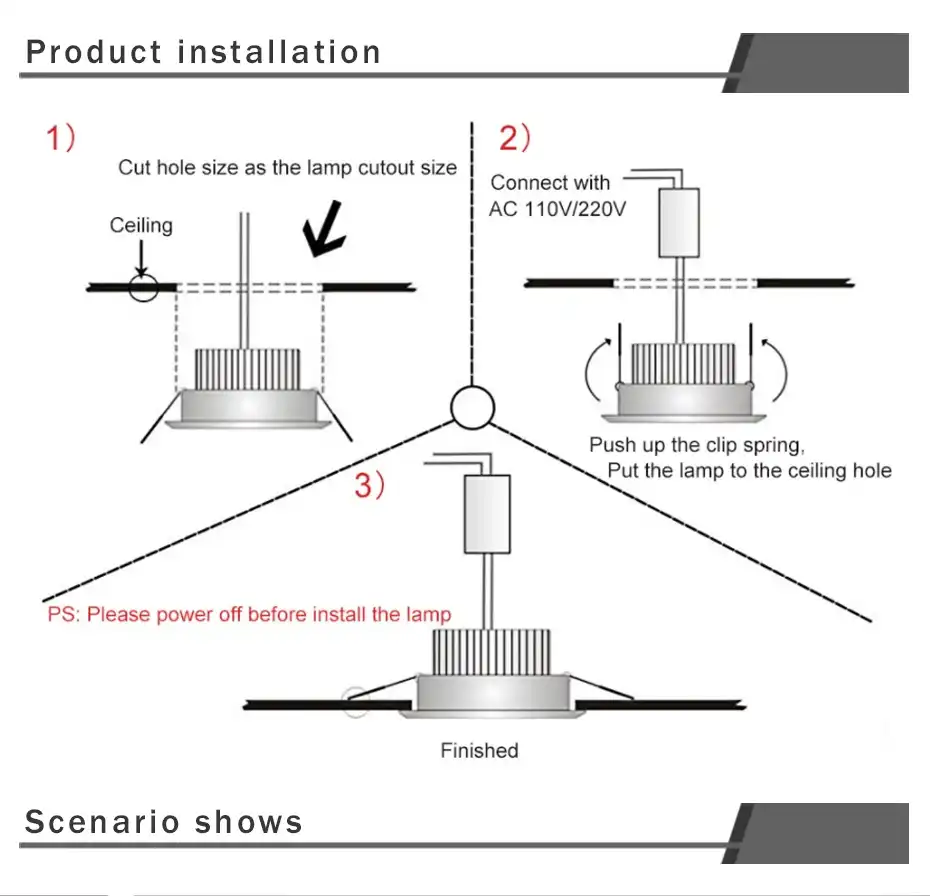
Optimizing Your Recessed Spotlight Installation
Layering Light for Enhanced Ambiance
While properly spaced recessed spotlights provide excellent general illumination, incorporating additional lighting layers can create a more dynamic and visually appealing environment. Consider combining your recessed spotlights with other lighting fixtures such as wall sconces, pendant lights, or table lamps to add depth and interest to your space.
This layered approach allows you to create focal points, highlight architectural features, and adjust the overall ambiance to suit different activities and moods. USKYLED offers a range of LED lighting solutions that can be seamlessly integrated into your layered lighting design.
Energy Efficiency and Long-Term Benefits
Opting for LED spotlights, like those provided by USKYLED, offers numerous advantages beyond just proper spacing. LED technology boasts impressive energy efficiency, saving more than 90% energy compared to traditional bulbs. This translates to significant cost savings on your energy bills over time.
Additionally, LED spotlights have an exceptionally long service life, often lasting 50,000 hours or more. This longevity, combined with their low maintenance requirements, makes LED spotlights a cost-effective and environmentally friendly lighting solution for your home or business.
Professional Installation and Customization
While DIY installation is possible for those with electrical experience, hiring a professional electrician ensures that your recessed spotlights are installed safely and efficiently. A lighting expert can help you fine-tune your spacing calculations, taking into account factors such as room layout, existing electrical infrastructure, and local building codes.
Furthermore, professional installation allows for greater customization options, such as incorporating dimming systems or smart home integration. These features can enhance the functionality and versatility of your lighting setup, allowing you to create the perfect ambiance for any occasion.
Conclusion
Properly spacing recessed spotlights is essential for achieving optimal illumination and creating a welcoming atmosphere in your space. By considering factors such as ceiling height, room dimensions, and spotlight specifications, you can determine the ideal spacing for your particular needs. Remember that while general guidelines provide a good starting point, each space is unique and may require some adjustment to achieve the perfect lighting balance.
For expert advice on recessed spotlight spacing and to explore high-quality LED lighting solutions, don't hesitate to reach out to the team at USKYLED. Our knowledgeable staff can help you design a lighting plan that meets your specific requirements and enhances the beauty and functionality of your space. Contact us at sales@uskyled.com to learn more about our innovative lighting products and how we can illuminate your world.
References
1. Smith, J. (2022). The Complete Guide to Recessed Lighting Design. Illuminating Engineering Society.
2. Johnson, L. (2021). Residential Lighting: A Practical Guide. American Lighting Association.
3. Williams, R. (2023). Energy-Efficient Lighting Solutions for Modern Homes. Green Building Council.
4. Brown, A. (2022). The Art and Science of Interior Lighting. Architectural Lighting Magazine.
5. Davis, M. (2023). LED Lighting: Technology, Applications, and Energy Savings. Institute of Electrical and Electronics Engineers.

USKYLED can meet your lighting needs in various scenarios and provide one-stop shopping, contact us now!
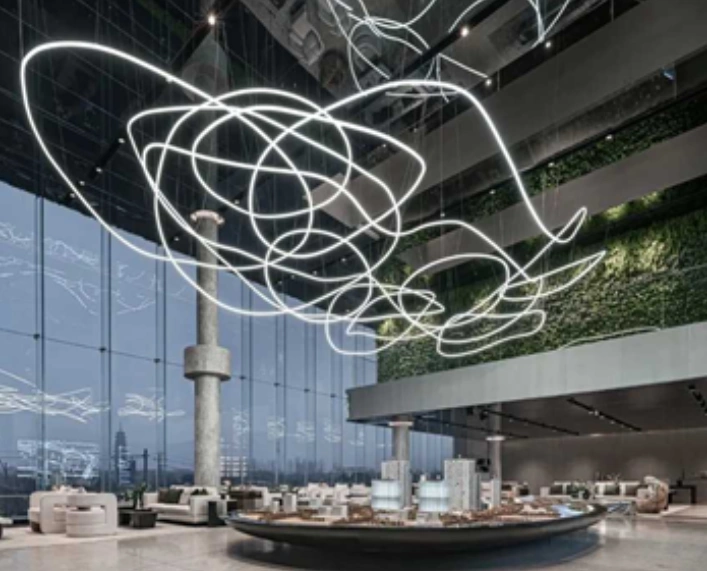
Why You Should Choose USKYLED?
![What is Dimmable Track Lighting for Museum: Best Guide [2025]](/icms/upload/0d08cc601e7611f0b542b3ca0c0f4a83/pic/knowledgemanager-knowledgepic/e7879f32605f11f081911f363b8c1ed0/Directory/20250717 dimmable track lighting -1(1)_1752739217941.webp)
